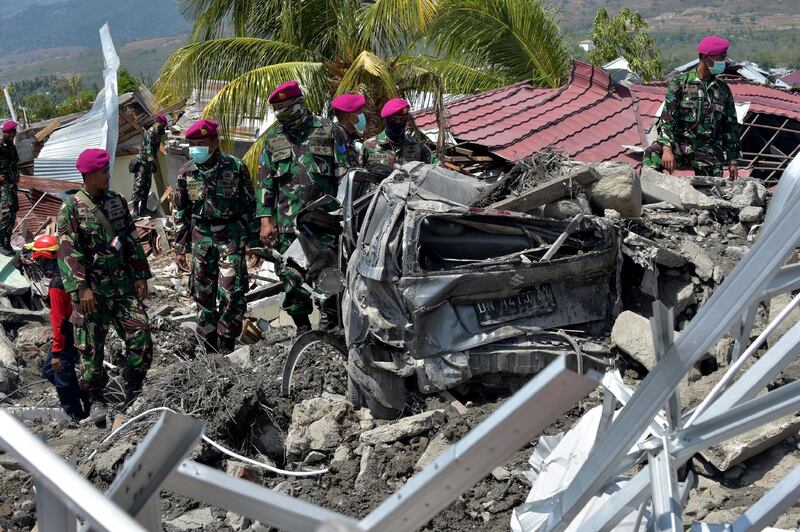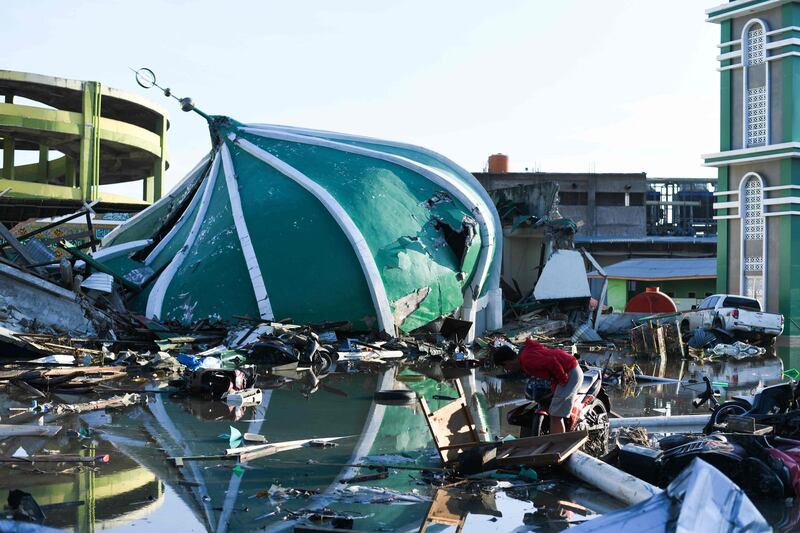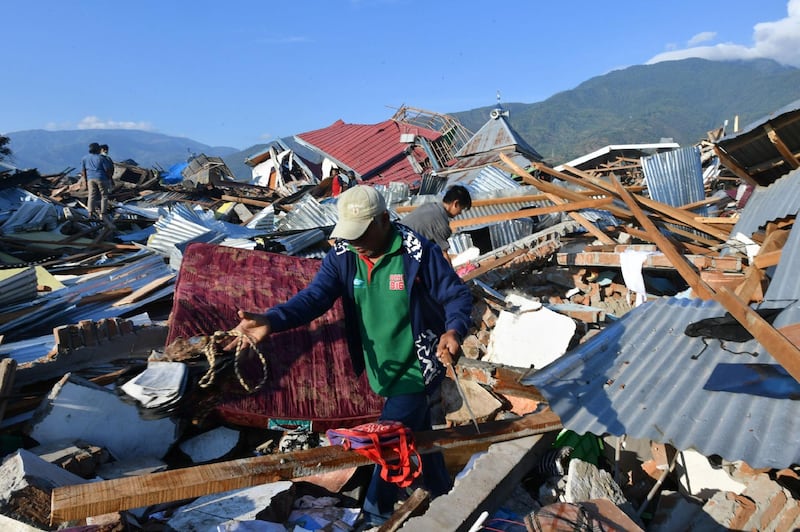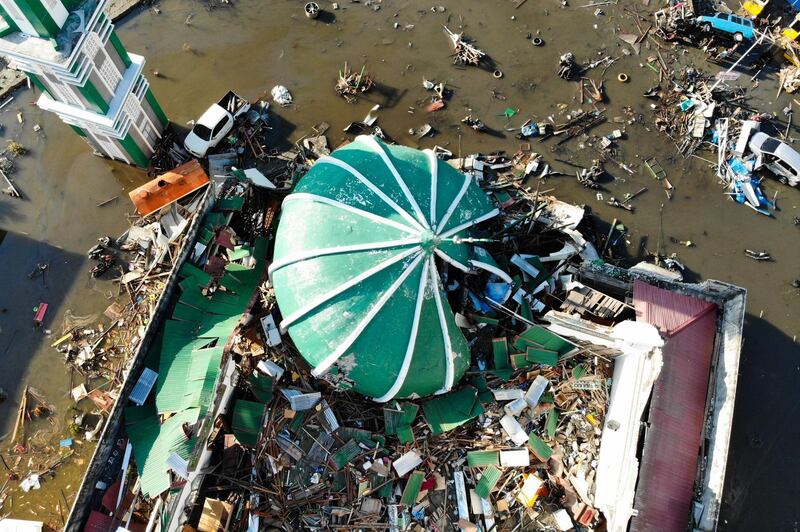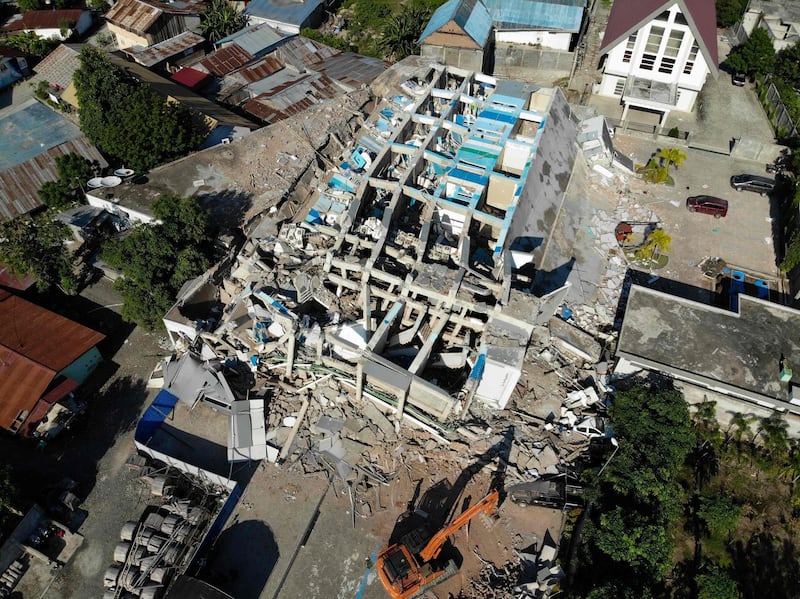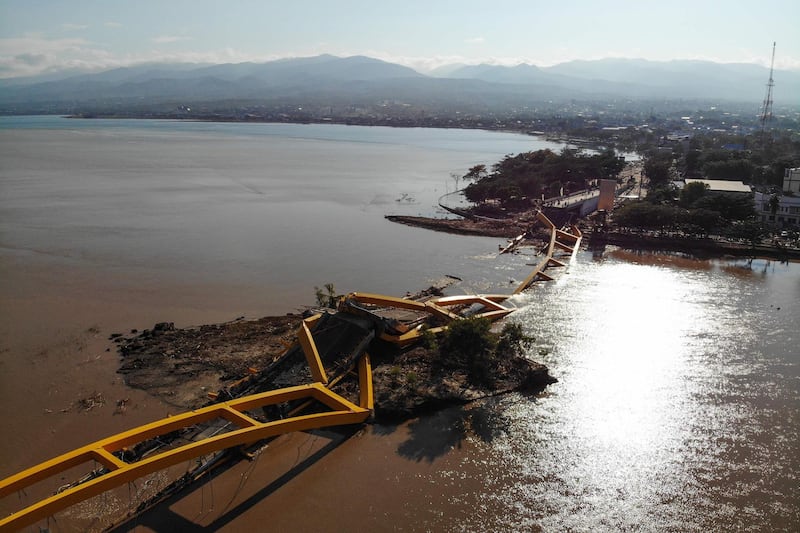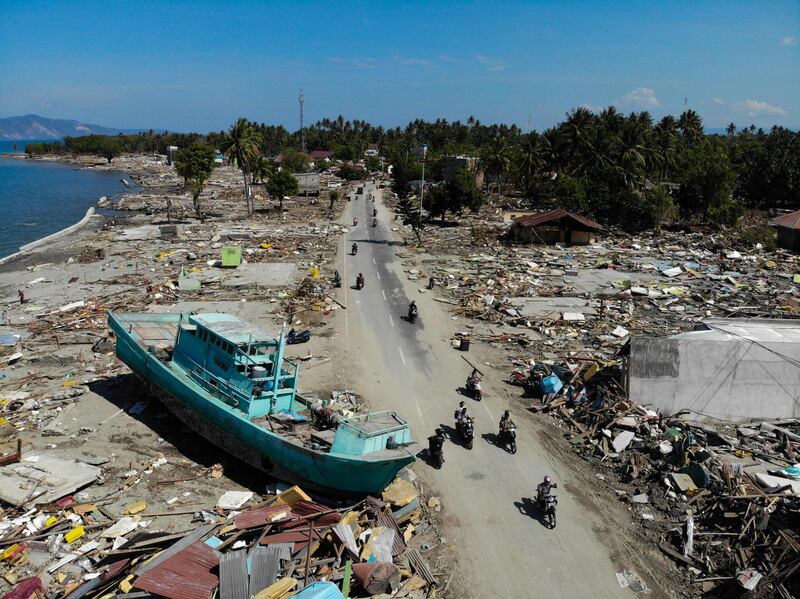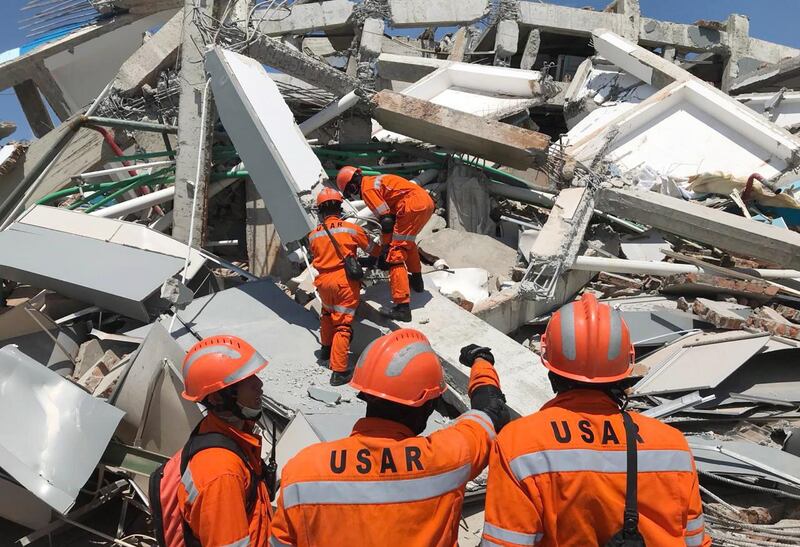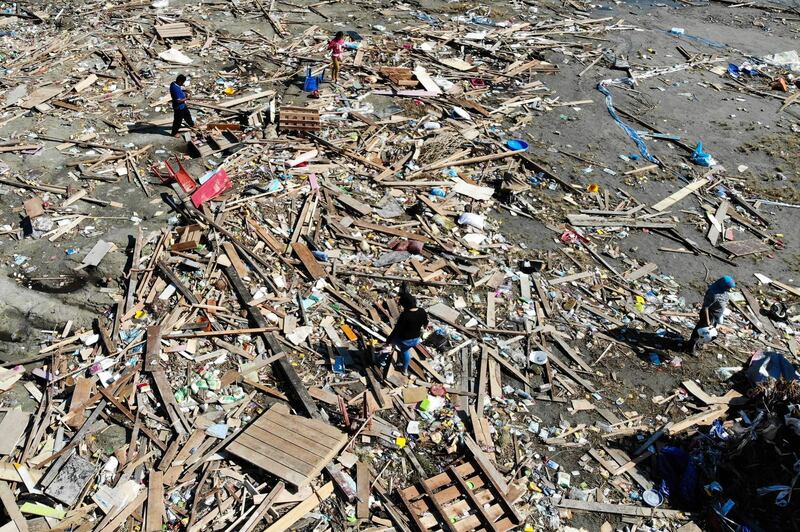A man was pulled out alive from a destroyed building in Pali on Monday, after a three hour-effort by a search and rescue team, days after an earthquake and tsunami destroyed the city on Indonesia's Central Sulawesi island.
Video from the National Search and Rescue Agency showed the 38-year-old man being rescued from the ruins of a financial building.
In the city, 1,700 buildings were destroyed, an entire neighbourhood was swallowed up and hundreds of people are believed to be buried underneath.
The rescue was a bright spot in an increasingly desperate situation.
Desperation was visible everywhere on Tuesday, with victims receiving little aid in the heavily damaged areas, four days after the devastation. Signs propped along the roads read "We Need Food" and "We Need Support," while children begged for cash and long lines of cars snarled traffic as people waited for fuel.
Teams searched for more trapped survivors under destroyed homes and buildings throughout the island, including a collapsed eight-story hotel in Palu, but they needed heavy equipment to clear the rubble.
Palu, a city of more than 380,000 people, was especially hard-hit by both the quake and the tsunami, its force apparently magnified in the surrounding inlet.
Many people were thought to be trapped under homes in Palu's Balaroa neighbourhood, where the earthquake caused the ground to heave up and down violently, said disaster agency spokesman Sutopo Purwo Nugroho.
______________
Read more:
Indonesian man hailed as hero as quake-hit island starts burying dead in mass grave
Indonesia scrambles to help quake-hit island as death toll tops 800
Illusive tsunamis: The difficulty tracking mega waves
______________
"I and about 50 other people in Balaroa were able to save ourselves by riding on a mound of soil which was getting higher and higher," resident Siti Hajat told MetroTV. Her house was destroyed.
In the Petobo neighbourhood, the quake caused loose, wet soil to liquefy, creating a thick, heavy mud that caused massive damage. "In Petobo, it is estimated that there are still hundreds of victims buried in mud," Mr Nugroho said.
Residents who found loved ones — alive and dead — over the weekend expressed frustration that it took rescue teams until Monday to reach Petobo.
The confirmed death toll exceeded 1,200 on Tuesday, mostly from Palu, and is expected to rise as authorities reach cut-off areas.
The regencies of Donggala, Sigi and Parigi Moutong — with a combined population of 1.2 million — have yet to be fully assessed. The magnitude 7.5 earthquake struck at dusk on Friday and generated a tsunami said to have been as high as six metres in places.
About 3,000 residents flocked to Palu's airport, trying to board military aircraft or one of the few commercial flights. The airport was only partially operating due to the damage. Video showed people screaming in anger because they were not able to get on a departing military plane.
"We have not eaten for three days!" one woman yelled. "We just want to be safe!"
Nearly 50,000 people have been displaced from their homes in Palu alone, Mr Nugroho said, and hospitals are overwhelmed.
The Indonesian Air Force confirmed that a Hercules aircraft carrying an unspecified number of survivors were able to leave Palu for South Sulawesi's capital of Makassar.
Indonesian President Joko "Jokowi" Widodo authorised the acceptance of international help, Mr Nugroho said, adding that generators, heavy equipment and tents were among the most-needed items.
The European Union and 10 countries have offered assistance, including the United States, Australia and China, he said.
"We will send food today, as much as possible with several aircraft," President Widodo said in the capital, Jakarta, adding that a supply of fuel was also set to arrive.
The coastline at Palu was strewn with rubble and a few brightly coloured cargo containers poking out of the water. Buildings near the water were ruined shells. The arches of a large yellow bridge rested in the water and eerie drone footage showed a Ferris wheel, untouched, on a beach scraped bare by the waves.
Rescuers searching a collapsed building on Monday night were able to remove 38-year-old Sapri Nusin alive from the rubble. He was talking to his rescuers as they took him away but his condition was not known.
In the Petobo neighbourhood, Edi Setiawan said he and his neighbours rescued children and adults, including a pregnant woman. His sister and father, however, did not survive.
"My sister was found embracing her father," he said. "My mother was able to survive after struggling against the mud and being rescued by villagers."
Indonesia is frequently struck by earthquakes, volcanic eruptions and tsunamis because of its location on the "Ring of Fire," an arc of volcanoes and fault lines in the Pacific Basin. A powerful quake on the island of Lombok killed 505 people in August, and two moderate quakes took place near an eastern island on Tuesday.
The earthquakes 15 minutes apart reportedly damaged a bridge on the island of Sumba, but no tsunami warning was issued and no other damage was immediately reported.
The temblors took place nearly 1,600 kilometers south of Palu.
The vast archipelago is home to 260 million people on more than 17,000 islands that stretch over a distance similar to that between New York and London. Roads and infrastructure are poor in many areas, making access difficult in the best of conditions.
